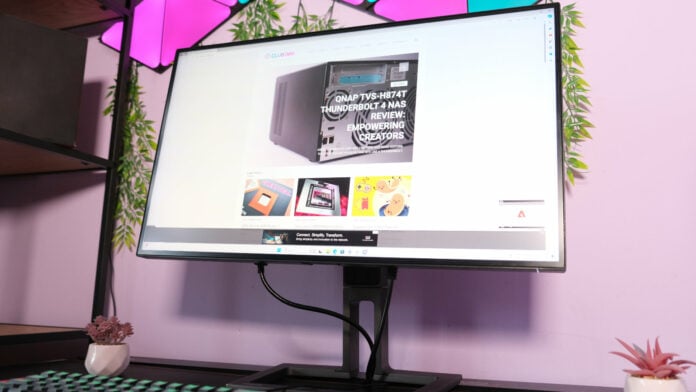Mini LED is perhaps the only panel that can keep pace with the indomitable rise of OLED. It’s bright, it’s booming, but without the blood-curdling risk of burn-in. Philips 27B1U7903 led the charge when it was first released just over a year ago, but its new price point puts it in a much more favourable light.
That which once cost you an eye-watering £2,199 has come down to a much more manageable £1,019.99. Better yet, it’s regularly on sale, often undercutting rivals of a similar calibre.
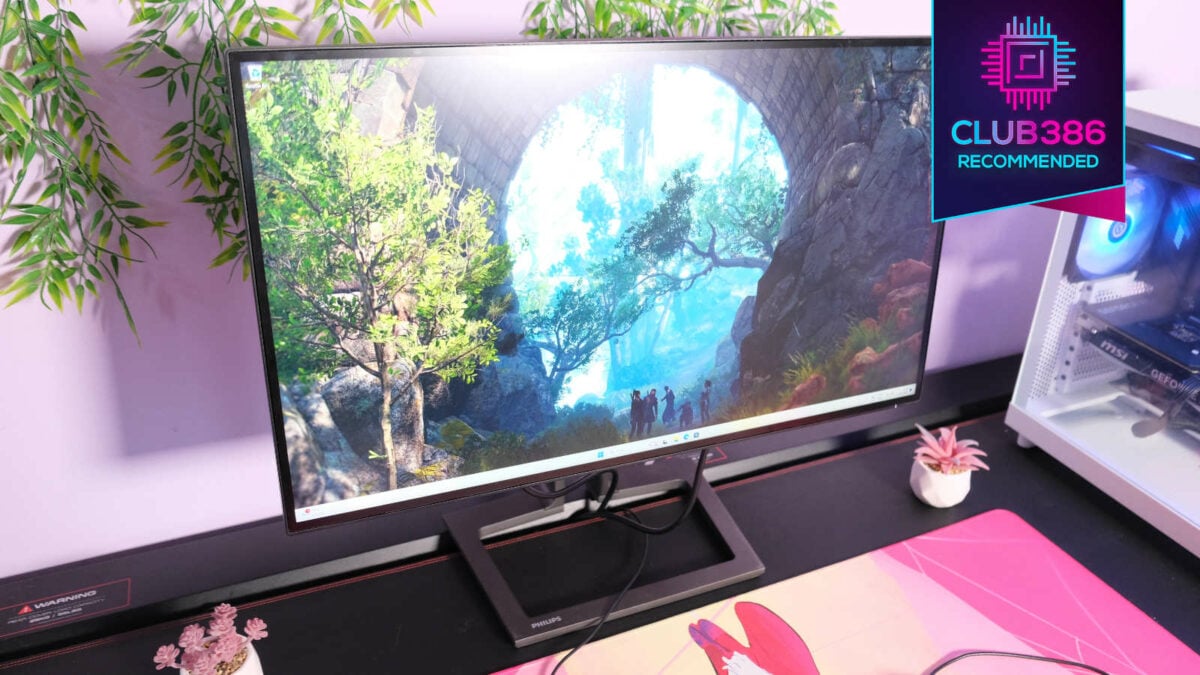
Philips 27B1U7903
£1019 / $999
Pros
- Thunderbolt 4
- Lots of ports
- Solid build
- Beautiful Mini LED
Cons
- Frustrating menu
- Muddy speakers
- Chonky
Club386 may earn an affiliate commission when you purchase products through links on our site.
How we test and review products.
On the surface, Philips 27B1U7903 is another 27in IPS monitor with 4K resolution. Its 60Hz refresh rate even shows that it doesn’t hold much in the way of gaming aspirations. At this point, you’re probably thinking, why on earth did it ever cost so much in the first place? With that, you need to dig a little deeper.
Ports and features
Professional monitors live and die by their connectivity, but Philips 27B1U7903 goes above and beyond. There are two HDMI 2.0 ports and a DisplayPort 1.4 to handle visuals, a 1G Ethernet port, an audio in/out connection, and four USB Type-A 3.2 Gen 1 ports for peripherals. One of these USBs even supports fast charging, which comes in handy.
The stars of the show are two Thunderbolt 4 ports with USB4 compliance. One supports video, 90W power delivery, and upstream data, while the other does video, 15W charging, and downstream data. Going beyond a simple KVM switch, the power of the latest port gives you the option to daisy-chain another 60Hz 4K display directly from your Philips 27B1U7903. I’d say this makes it the ultimate portable machine, but the 9.4kg weight, including the stand, gets in the way of that.
All the ports are downward facing on the underside of the monitor, covered by an indented lip. I imagine this is an attempt at cable management, but wires still poke out, and the ports aren’t the easiest to access. I’d prefer outward-facing instead, but it would have been nice to include side-mounted USBs for devices you unplug frequently – especially considering the display is just short of 7cm thick.
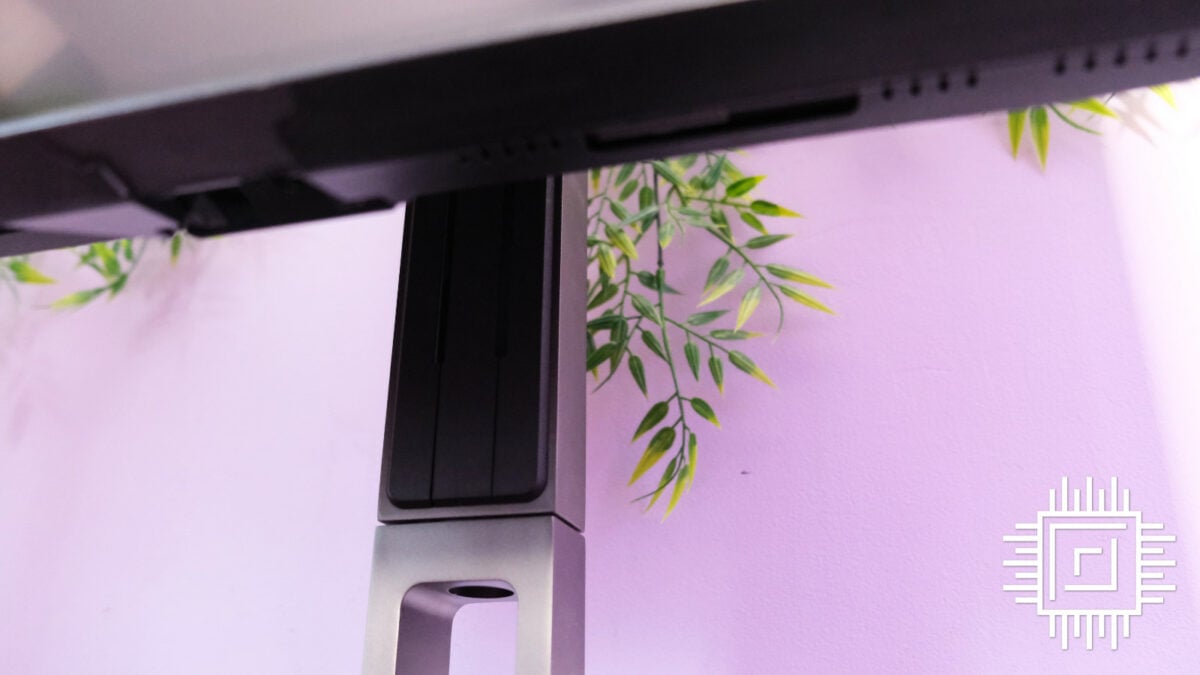
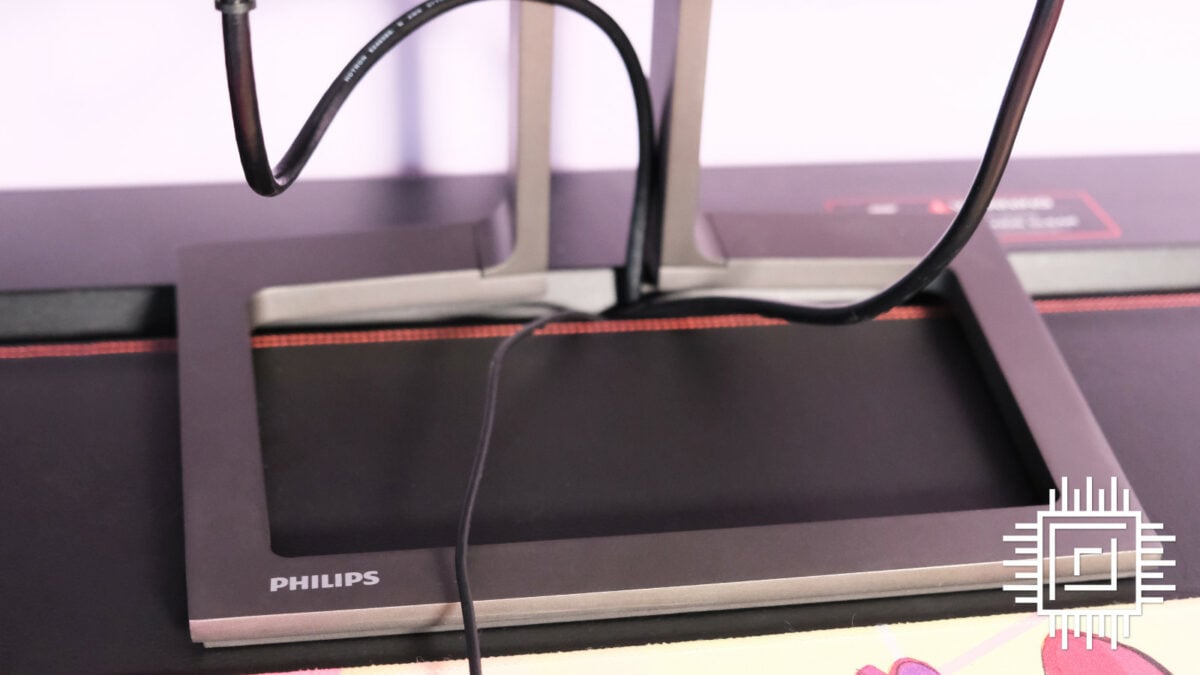
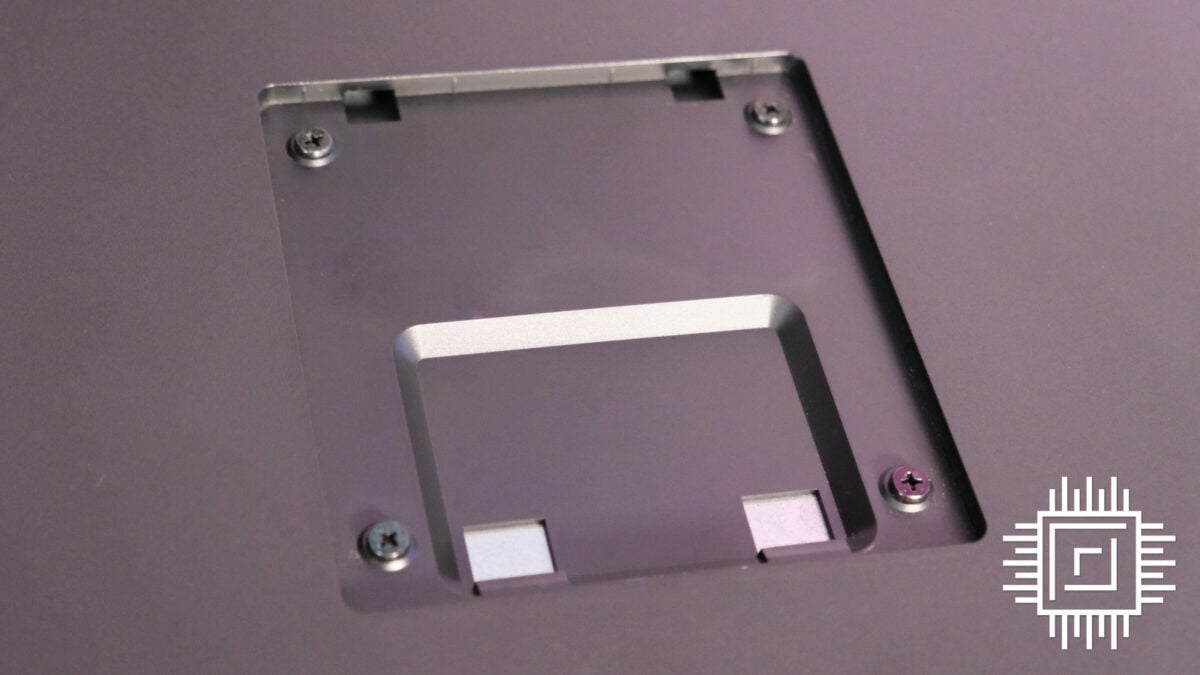
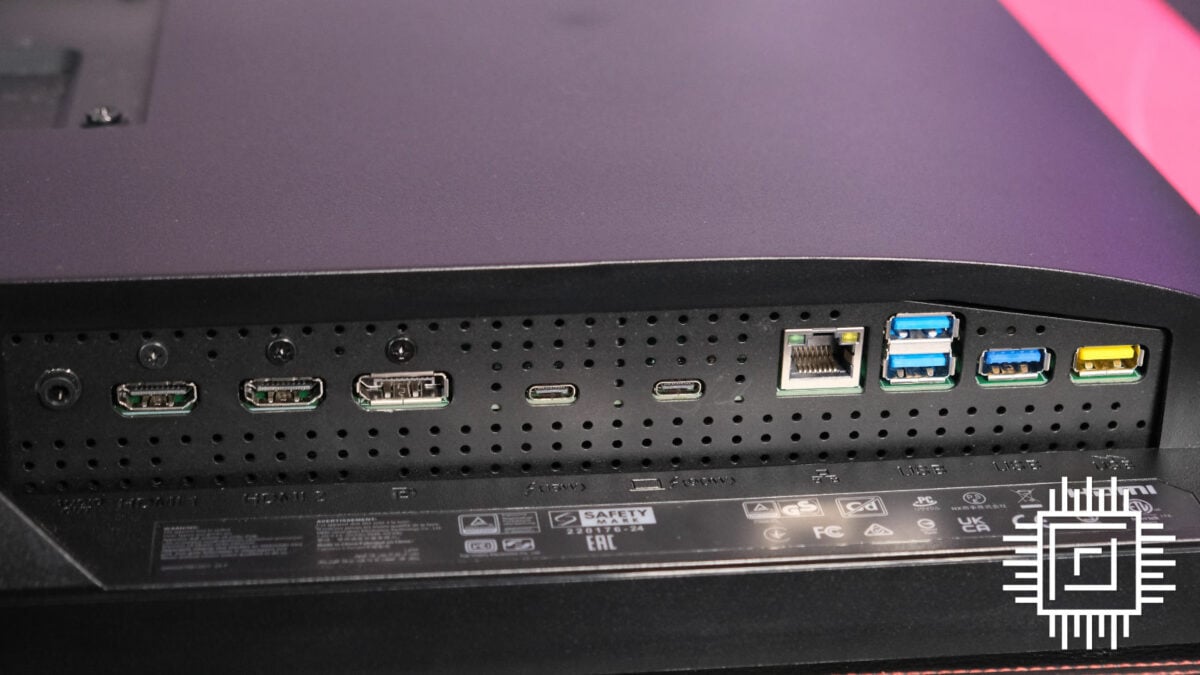
Fortunately, the stand makes it easy to get underneath. With a 90° pivot each way, it’s as simple as putting your monitor in portrait mode. It’s the same one featured on a few other Philips monitors, which isn’t surprising since it’s so well-built and robust. There’s no wobble, and alongside the pivot, it has a 45° swivel side-to-side, 130mm of height adjustment, and -5° to 15° tilt. As versatile as it is, my favourite part is the small footprint. Instead of two feet protruding into my admittedly large mousepads, the stand only takes up 20x30cm (DxW).
The weakest part of Philips 27B1U7903 is the settings menu. The buttons on the rear are hard to differentiate and far from intuitive. When you want to adjust a setting, the buttons are inverse to how they act on screen. The left button increases, sending the brightness, contrast, or whatever you’re changing to the right. The right button decreases, flinging the bar to the left. I’m sure you won’t spend too long fiddling with settings for this to be a big deal, but there’s a disconnection that’ll throw you when you do.
I can’t say the pair of 3W speakers are a particular highlight either. Generally, they’re on par with most other built-in solutions I’ve tested. You’ll always fare better with dedicated speakers, but they’ll help in a pinch. And credit where it’s due, they can get loud if you fancy cranking the dial to 11.
Mini LED goes big
The second headline feature is the Mini LED panel. The tech originally reared its beautiful head in 2019, and it’s surprising not to see more on the market. What makes it so special is its arrangement. Rather than edge-lit panels, clusters of tiny individual LEDs band together for a more uniform backlight. The aim is deeper blacks akin to OLED but without the drawback when it comes to brightness.
Philips 27B1U7903 boasts 2,304 lighting zones, which is double Evnia 34M2X7600MV. Peak brightness caps at 1,000nits at SDR or DisplayHDR 1400. This is actually the highest achievable outside of TrueBlack, and it’s worlds apart from the days of the barely-passable DisplayHDR 400.
Coming from MSI MEG 342C, I instantly noticed the difference. Both are bolstered with Quantum Dot layers to enhance colours, but our Philips hits a brightness that’ll fight off even the warmest sun shining through your window. Of course, the 178° viewing angles and anti-glare matte finish only add to this strength.
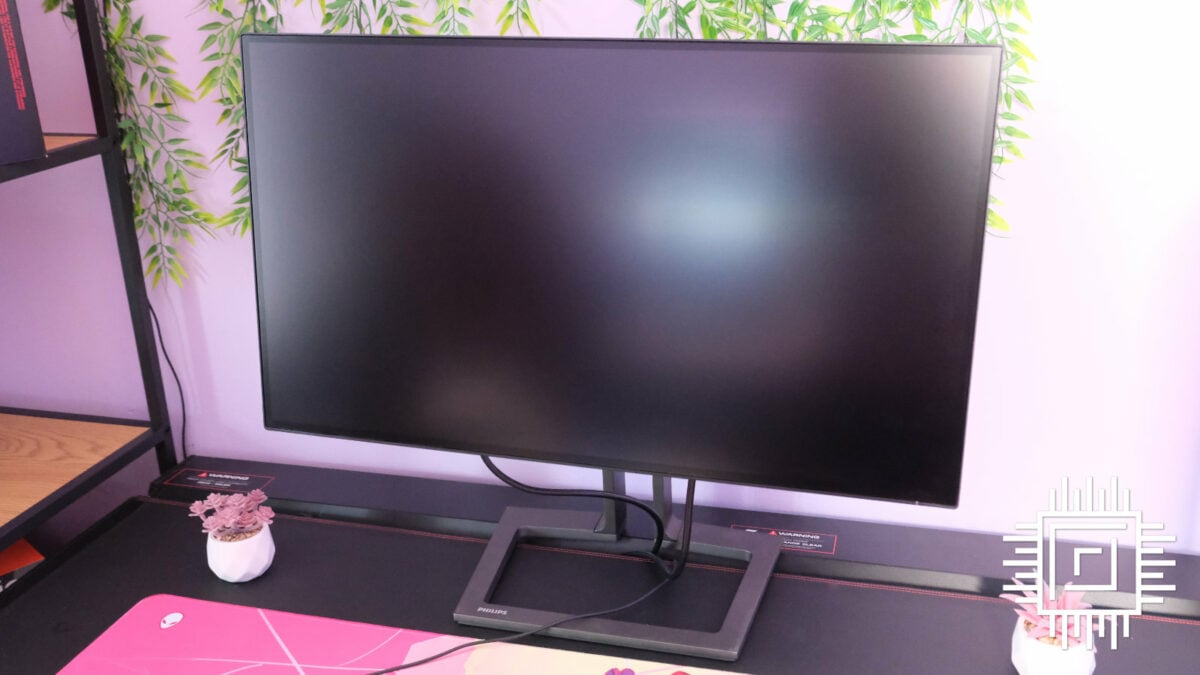
You can choose between your usual presets in the SmartImage menu. I don’t rate Movie, Game, or Office very highly as they muddy colours and contrast. It’s not a complete write-off, though. EasyRead changes things to black and white so it’s less distracting, Economy goes a long way to save pennies on the electric bill, and LowBlue is a safety net for your eyes.
None are as rich as changing colour spaces, which include NTSC, sRGB, AdobeRGB, DCI-P3, Rec 2020, Rec 709, and D mode. They each serve different standards depending on whether you’re editing photos or enjoying light entertainment. My go-to is DCI-P3, where colours are punchy but with deeper contrast to the naked eye.
I’m happy to say that HDR is a better implementation than its predecessors. Enabling adaptive sync alongside HDR no longer forces you into the DisplayHDR 1400 preset. You have the choice of Premium, Effect, Warm, Basic, and HDR1400.
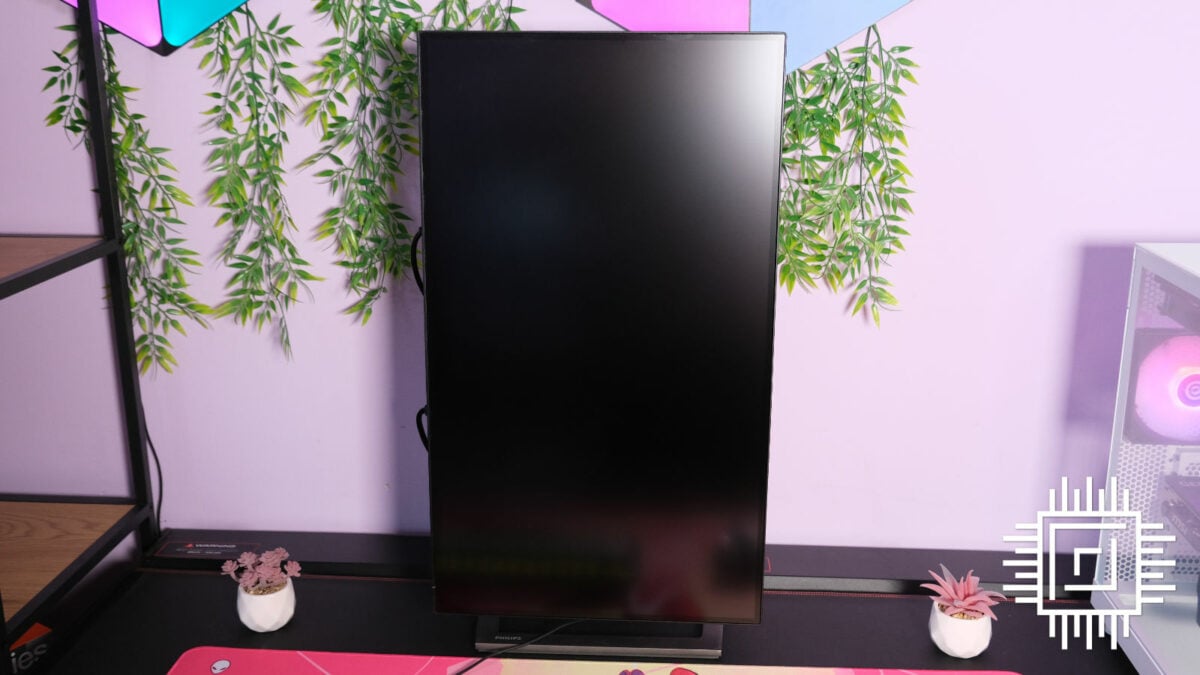
Much like my colleagues, however, I long for the day HDR becomes an automatic feature. It’s fantastic for gaming with deeper blacks, but whites on Philips 27B1U7903 look a little too warm with it enabled. I prefer SDR in my day-to-day and having to switch between both in this particular on-screen display isn’t fun. It’s less the fault of Philips and more of a Windows thing, but notable, nonetheless.
Still, this IPS display is stunning no matter what setting you gravitate toward. It might be an absolute chonk, but an 8mm frame and 10mm chin are close enough to bezel-less that the screen shines as a centrepiece.
Performance
Colour credentials
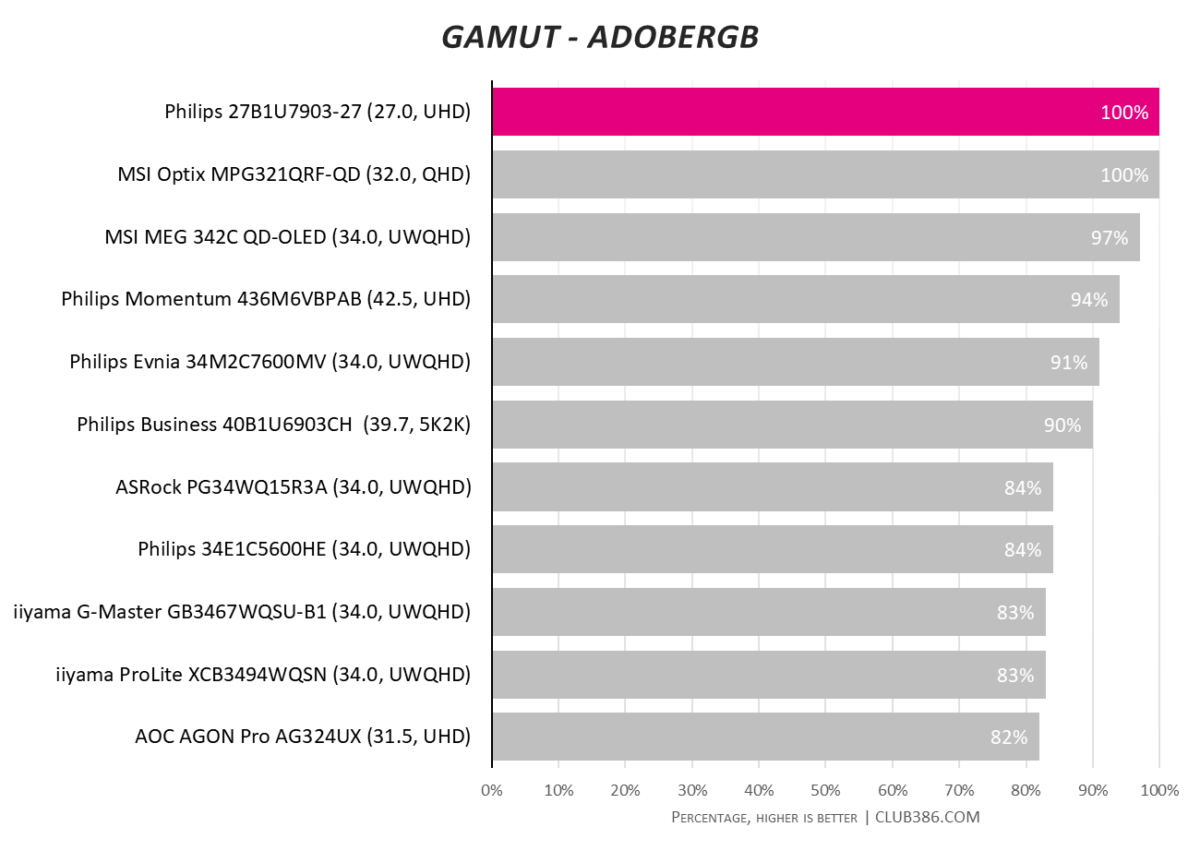
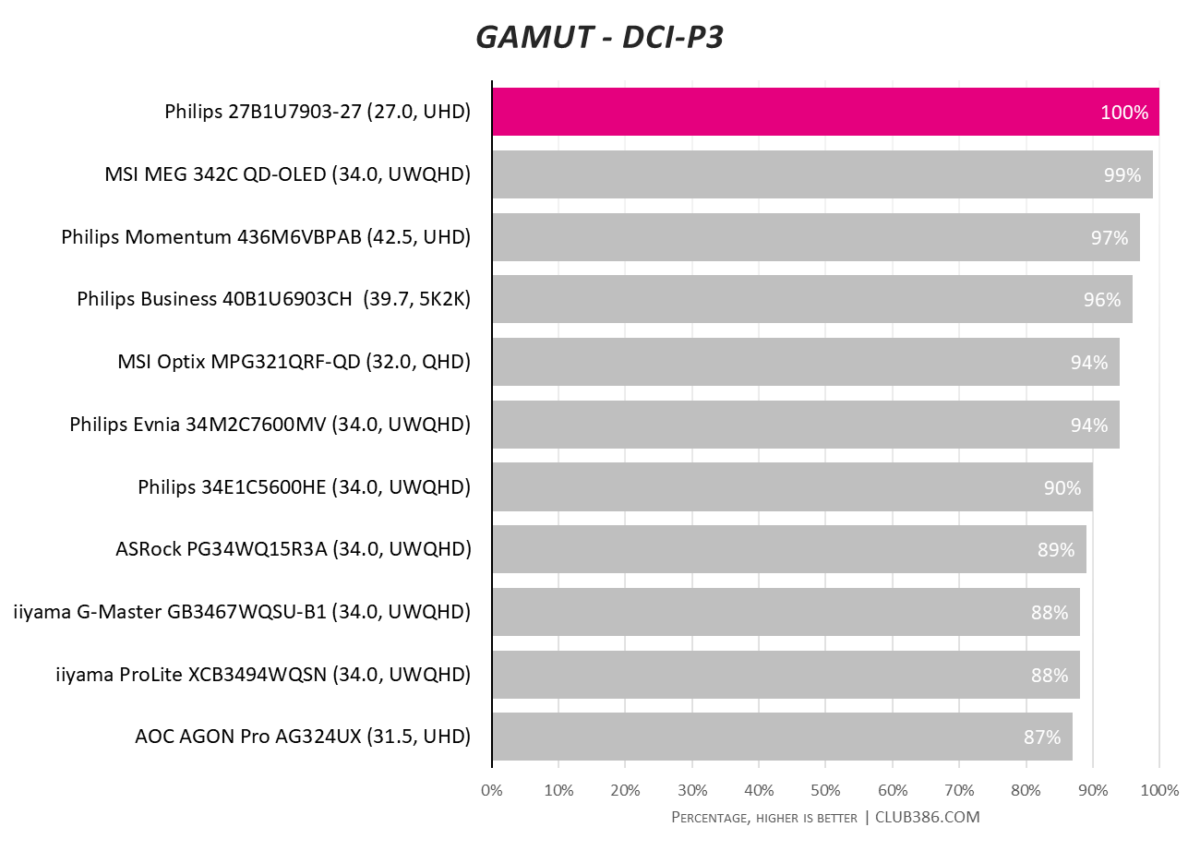
Nothing out there rivals Philips 27B1U7903 with colour coverage spanning the entirety of two different spectrums. It looks like Mini LED and IPS are a winning combination.
Brightness and contrast
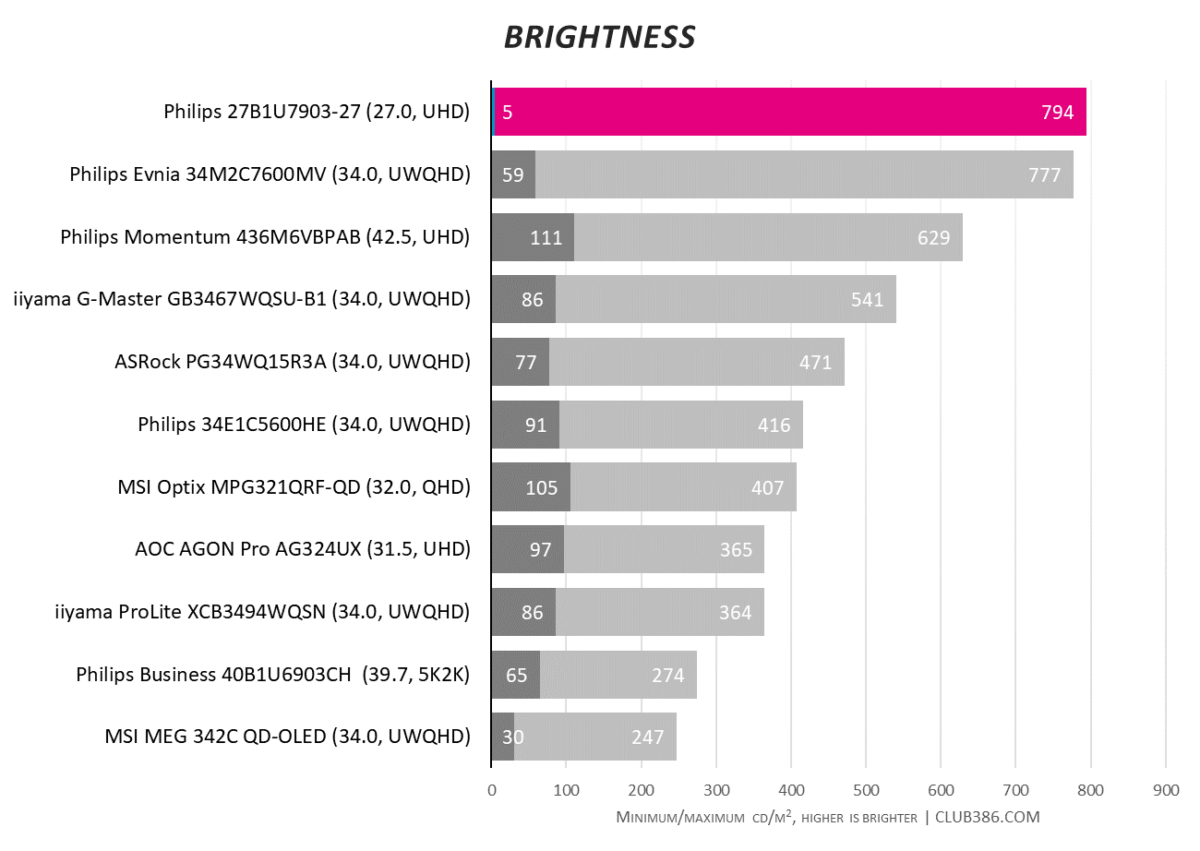
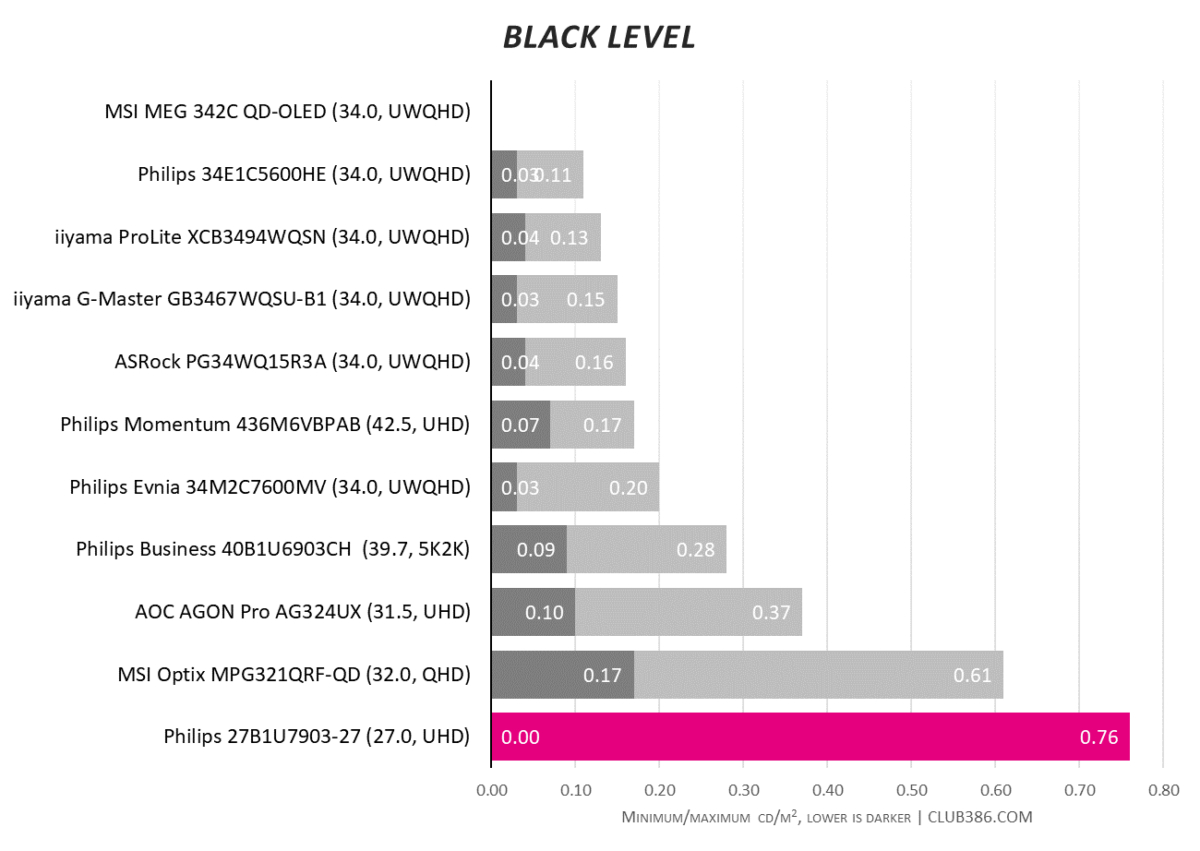
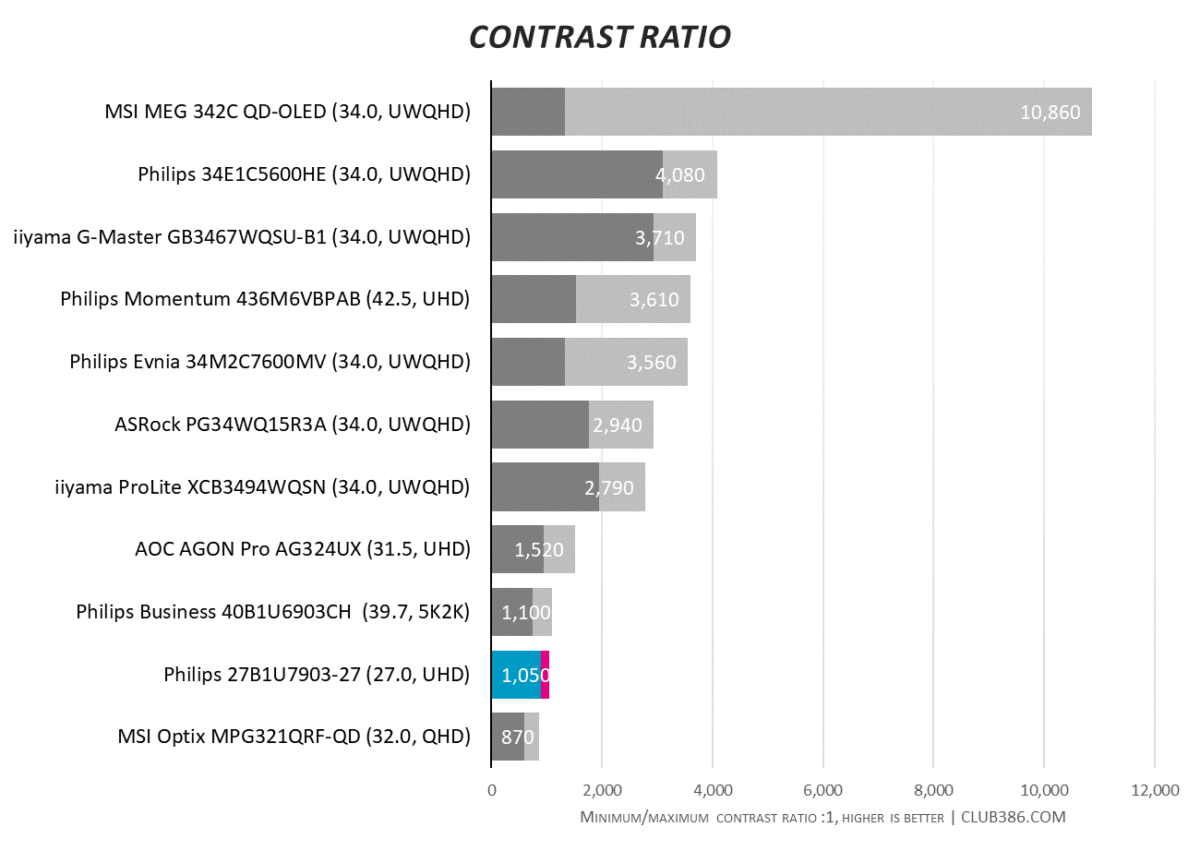
Philips 27B1U7903 is also a chart-topper with brightness. I can’t stress how much I squinted the first time I cranked it as high as it’ll go. Fortunately, it’s entirely optional, with the lowest of lows to fall back on.
Black levels can be perfect at their minimum, but it strays a little too far from TrueBlack at times. The contrast ratio also leaves something to be desired, although I honestly couldn’t tell without a tool indicating as such.
Uniformity and efficiency
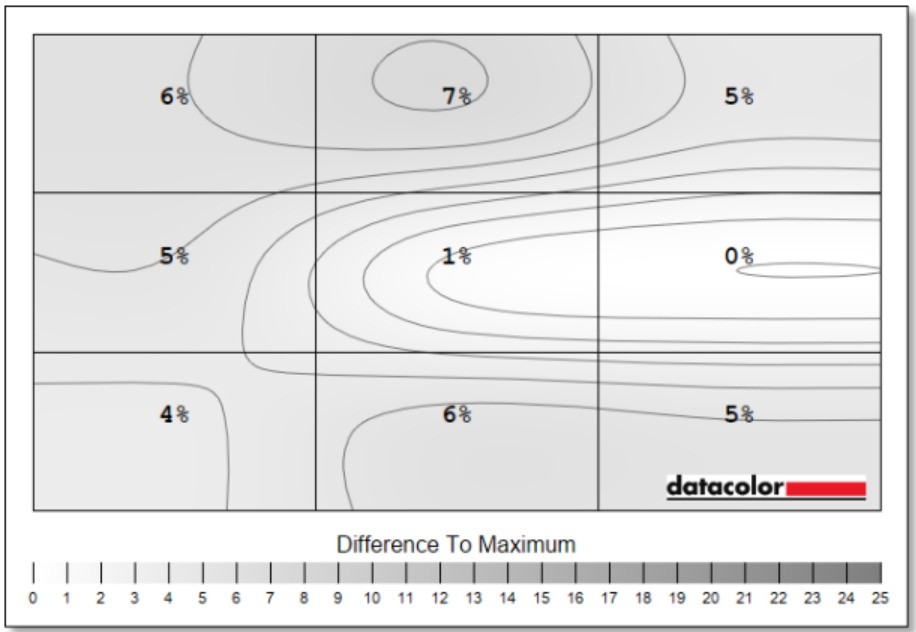
Luminance uniformity is impeccable, with little variance from top to bottom. It’s one of the more consistent panels we’ve tested.
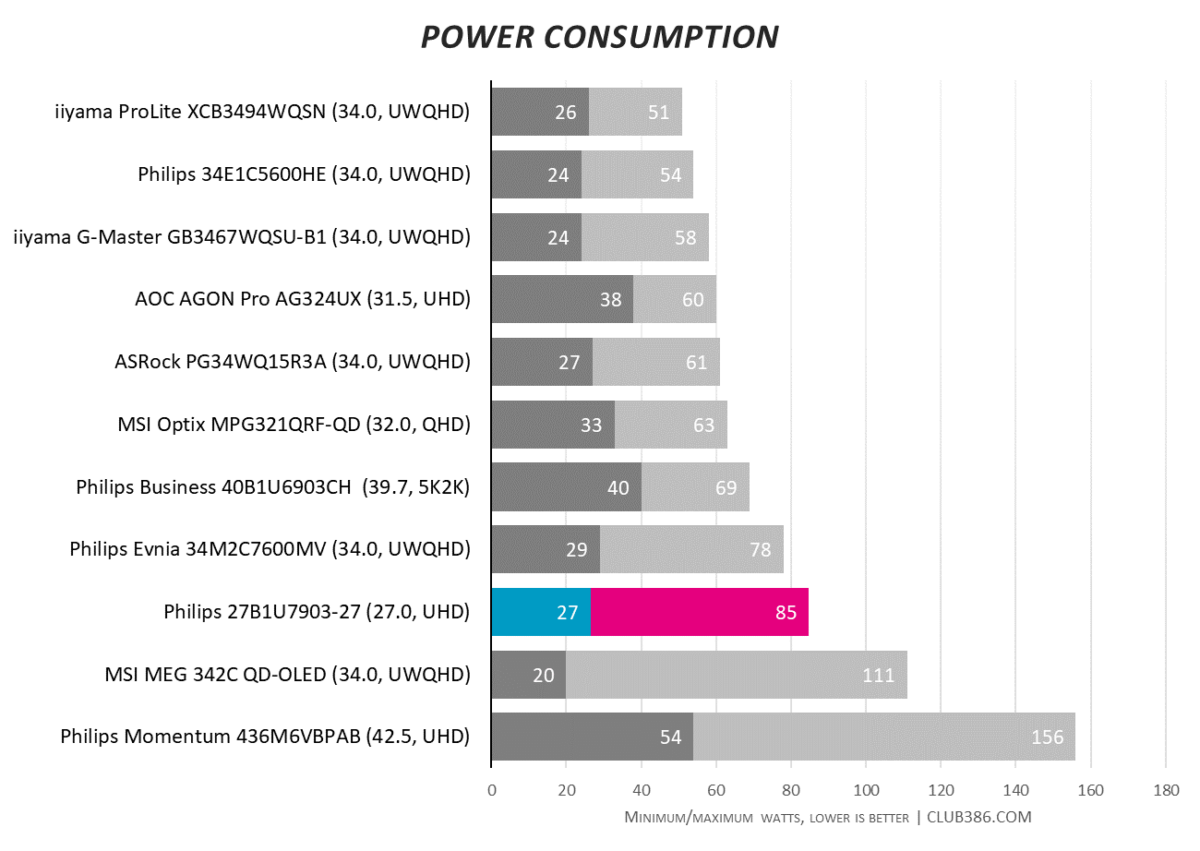
All of this performance makes the monitor a hungry boy. It doesn’t quite guzzle as much as OLED or monitors twice its size, but remembering this is a 27in panel puts things in perspective. Its maximum power draw tops 5K2K screens that are 50% bigger. That said, the minimum requirements are much tamer and where you’ll likely sit more often than not.
Conclusion
Philips 27B1U7903 is not just a monitor; it’s a statement of what’s possible when technology meets professional demand. I can’t say it impresses enough to warrant its original price tag, but it looks a lot more comfortable around the £1k mark.
For your pennies, you get a stunning 4K IPS display with advanced features like Mini LED backlighting, DisplayHDR 1400, and Thunderbolt 4 connectivity. Philips could’ve saved on costs by sticking with Thunderbolt 3, but then we’d miss out on daisy-chaining monitors and powerful data streams. Its current form makes it a docking station in its own right, perfectly suited for Macs and productivity users.
There are a few things I’d like to see changed. USB placements could be better, Philips could offer a longer Thunderbolt cable in the box, and the on-screen menu needs an overhaul. But when pitted against the rest of the market, it holds up nicely. Backed by a 2-year warranty, Philips 27B1U7903 should have you set for all your work needs.
Verdict: A beautiful Mini LED monitor that’s fallen so far in price that it might be a steal.

